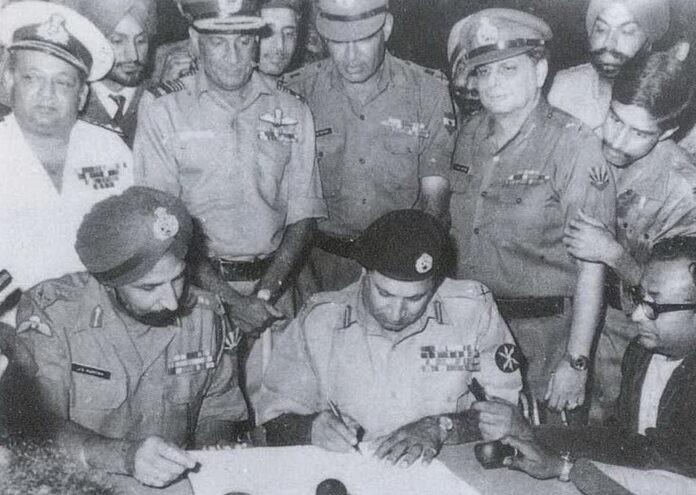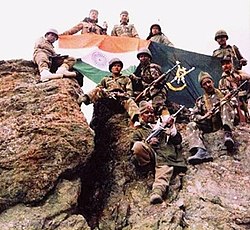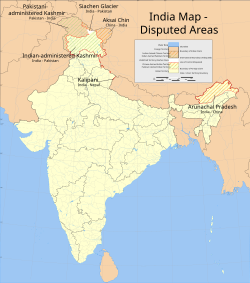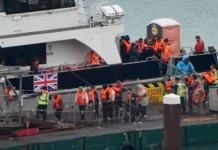
By Kelly Were, International Affairs Correspondent
Tensions are still high after the clash that was witnessed between India and Pakistan on Wednesday. With both sides claiming victory the threat of another impending confrontation still looms in the air.
India and Pakistan have a complex and largely hostile relationship that is rooted in a multitude of historical and political events, most notably the partition of British India in August 1947.
India and Pakistan—nuclear neighbors bound by history, religion, and rivalry—have witnessed cycles of hostility, hope, and heartbreak.
The enduring tensions between these two nations stem not just from border lines, but from wounds unhealed, trust betrayed, and identities forged in opposition.
Here is a quick recap;
The Roots of Division: Partition and Its Aftermath
In 1947, the British Empire hastily ended its colonial rule over India, carving out a separate homeland for Muslims: Pakistan. The result was one of the bloodiest mass migrations in human history, displacing up to 15 million people and killing an estimated several hundred thousand to one million. Hindus and Muslims migrated in opposite directions across the Radcliffe Line to reach India and Pakistan, respectively.
Almost immediately after independence, the two nations went to war in 1947–48 over the princely state of Jammu and Kashmir—a majority-Muslim region ruled by a Hindu monarch. India retained most of Kashmir after the war, while Pakistan controlled a third. The United Nations intervened, calling for a ceasefire and a plebiscite that never materialized. The “Kashmir issue” would become the nucleus of Indo-Pak hostility.
Wars and Wounds: A Timeline of Conflict
1. First Indo-Pak War (1947–1948) — The Birth of the Kashmir Conflict
Cause: In the aftermath of Partition, princely states were given the option to join either India or Pakistan. The Maharaja of Jammu and Kashmir, Hari Singh, initially tried to remain independent. But as tribal militias from Pakistan invaded in October 1947—allegedly backed by the Pakistani army—he sought India’s military help in exchange for accession to India..
Events: Indian troops pushed back the invaders. The UN-brokered ceasefire in 1949 established the Line of Control (LoC).
Result:
- Pakistan took control of one-third of Kashmir.
- India retained two-thirds, including the Kashmir Valley.
- UN called for a plebiscite that never occurred.
2. Second Indo-Pak War (1965) — Operation Gibraltar and Strategic Miscalculations
Cause: Pakistan believed that internal unrest in Indian-administered Kashmir could be exploited. Under Operation Gibraltar, Pakistani soldiers disguised as insurgents infiltrated Kashmir to incite rebellion. India responded with full military force, launching offensives across the international border.
Events: Large-scale tank battles ensued. India advanced toward Lahore. Heavy fighting also took place in Sialkot and Chamb.
Result:
- War ended in a stalemate with both sides agreeing to withdraw to Pre-War positions.
- Tashkent Agreement (1966) mediated by the Soviet Union.
3. Third Indo-Pak War (1971) — Birth of Bangladesh
Cause: The war stemmed from political tensions in East Pakistan (now Bangladesh), where Bengali nationalists demanded autonomy. After the Pakistan military launched Operation Searchlight—a brutal crackdown on civilians and political activists—millions of refugees flooded into India, prompting intervention.
Events: India supported Mukti Bahini; war began after Pakistani airstrikes.
Result:
- Lasted 13 days; Pakistan surrendered on December 16, 1971.
- Over 90,000 POWs taken.
- Bangladesh became independent.
4. Kargil War (1999) — A Cold War on Frozen Peaks
Cause: Pakistani soldiers and militants infiltrated Indian positions in the Kargil sector of Jammu and Kashmir during winter when Indian troops vacated high-altitude posts. The operation, allegedly led by General Pervez Musharraf (then Army Chief), aimed to cut off India’s link to Ladakh.

Events: India launched Operation Vijay to retake lost territory.
Result:
- India recaptured positions.
- Pakistan faced international isolation.
- Over 500 Indian and 400–700 Pakistani soldiers killed.
Impact: India gained international credibility; war was televised, galvanizing national sentiment.
Insurgency in Kashmir (1989–present)
Reports by the Council of Foreign Relations allege Pakistani military and ISI support for terrorist groups like Jaish-e-Mohammed. Pakistan denies direct involvement, claiming only moral and political backing for secessionist movements.

Journalist Stephen Schwartz suggests some militant groups are backed by senior Pakistani military and intelligence officials.
Notable Insurgent Attacks
- 2001: Jammu and Kashmir Assembly bombing killed 27.
- 2001: Indian Parliament attack, attributed to Pakistan-based militants.
- 2003: Qasim Nagar grenade and gunfire attack killed 27.
- 2002: Assassination of Hurriyat leader Abdul Ghani Lone.
- 2005: Srinagar bombing killed 5, including 4 Indian soldiers.
- 2005: Budshah Chowk grenade attack injured 17.
- 2005: Education Minister Ghulam Nabi Lone assassinated.
- 2016: Uri attack killed 18, the deadliest in 20 years.
- 2019: Pulwama suicide bombing killed 38 CRPF personnel.
- 2025: Pahalgam tourist attack killed 28, including two foreigners.
India responded to the 2025 Pahalgam attack by halting the supply of Indus River waters to Pakistan, escalating tensions further.
Conclusion: A Future Held Hostage?
Despite sporadic attempts at peace—from cricket diplomacy to ceasefire agreements—trust remains brittle. The nuclear capabilities of both nations, combined with entrenched nationalist sentiments and unresolved territorial claims, make their rivalry one of the most dangerous in the world. Until both nations can move beyond the ghosts of partition and the politics of provocation, the subcontinent’s hope for lasting peace remains a distant dream.


















